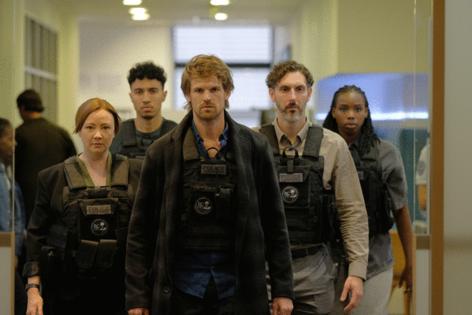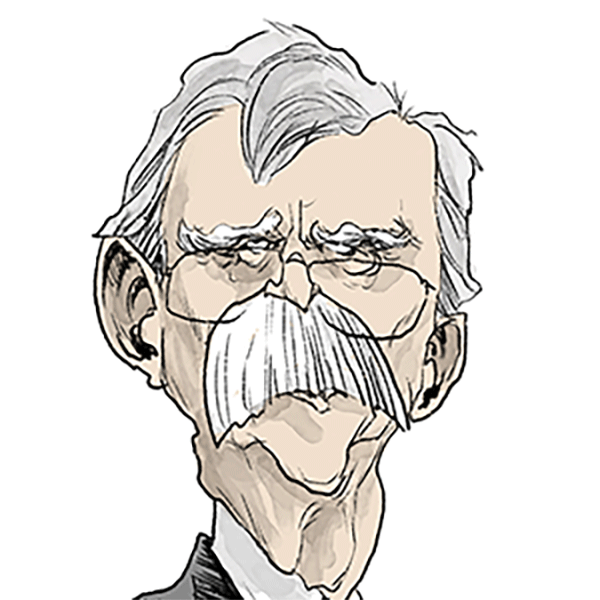Review: 'Maigret' on PBS is the latest version of Simenon's sleuth. Here are 6 more to watch
Published in Entertainment News
“Maigret,” premiering Sunday on PBS, is the fourth British series (plus one failed pilot) to be titled “Maigret,” after its main character, Georges Simenon’s Paris-based police detective. As I’ve written here before, he’s my favorite fictional detective, both because the stories serve my Francophilia — they provide a virtual map of the city and beyond — and for his ordinariness as a middle-aged, middle-class, happily married man, who is thoughtful, kind, uncomfortable around the rich and sympathetic to the poor, including many who might be counted among the criminal class. You wouldn’t call him melancholy, exactly, but he feels the weight of the job, of his difficult superiors, of the wicked world. He’s an honest policeman who describes himself as a “functionnaire,” a civil servant, and whose belief in justice might sometimes lead him to letting a malefactor escape. And he likes his food, and he likes his drink.
That the new series, starring Benjamin Wainwright (“Belgravia: The Next Chapter”), is set in the present day is not unusual. With 75 novels and 28 stories published between 1931 and 1972, it’s impossible to locate the character in any specific time anyway; most adaptions are set in the time in which they’re filmed, but even the period adaptations don’t necessarily reflect the year of publication.
Nor does the fact that “Maigret” 2025 swerves from the original texts distinguish it from films and series that have preceded it — most of them, obviously, made in France, where Maigret has many times appeared on the big screen, notably portrayed by French film icon Jean Gabin and recently by Gérard Depardieu in a well-regarded 2022 film, also called “Maigret,” as well as two long-running television series. The latter, another “Maigret,” which ran from 1991 to 2005, starred Bruno Cremer, widely regarded as the best — or among the best, to not start any arguments — of the screen Maigrets. Maigret series have also appeared in Russia, Italy and Japan; America, to the extent we’ve been interested, has imported English-language adaptations from the U.K., which is once again the case.
What’s different this time is that Maigret himself has been given a makeover, made younger, buffer, sexier, slightly more of an action hero, with the beard often assigned to the modern police detective. If you come to the series with a love for Simenon’s character — envisioned by the author as “a large powerfully built gentleman [with] a pipe, a bowler hat, a thick overcoat” and more or less faithfully represented in previous films and series — you’ll have to overlook this transformation, or else look away. The question of whether Wainwright’s Maigret is, you know, really Maigret, is one surely to be debated among the fans.
Meanwhile, there are other Maigrets waiting for you by way of comparison, officially or unofficially streaming. What follows is a short guide (mostly) to the English-language “Maigrets”; each has it charms and most are recommended.
Pierre Renoir, ‘Night at the Crossroads’ (1932)
The first screen Maigret, included here for historical interest and because a subtitled version is available on YouTube. Directed by Jean Renoir the year after the novel was published — Simenon, fast out of the gate, published 10 Maigret novels that year — and starring his brother Pierre as Maigret, the film is moody, foggy, dark and slow and has the advantage of actually representing its period. Pierre Renoir’s Maigret is stoical and efficient, and will not be vamped by Winna Winifried’s peculiar femme fatale, as hard as she tries.
Charles Laughton, ‘The Man on the Eiffel Tower’ (1950)
From the novel “La Tête d’un homme (A Man’s Head),” also from 1931, the first English-language adaptation lists “the city of Paris,” on whose streets it was filmed, among the cast in the opening credits. (It’s a trip in time and space.) Laughton plays Maigret with dry humor, though he’s capable of being roused when exasperated or angry, as he often will be here. Co-producer and co-star Franchot Tone chews the beautiful scenery (in color) in a battle of wits Maigret and you both know he’s bound to lose. Directed by Burgess Meredith, who also plays a murder suspect, it adds a thrilling chase up the actual Eiffel Tower, no special effects required. (Laughton isn’t doing the chasing.) Dark film noir compositions alternate with bright sunny street scenes. Stream on Tubi.
Rupert Davies, ‘Maigret’ (1960)
Fifty-two episodes across four seasons were made of this BBC series, shot on video, as many British series were then, and so acted largely on soundstages, which suits a character whose job consists largely of asking questions and listening to other people talk; long interrogations, often lasting overnight, with beer and sandwiches brought up from a neighboring restaurant, are a specialty of the house. (What location filming there is, is actually Paris, in the heart of the nouvelle vague era.) Davies’ Maigret is active and energetic without breaking a sweat, very much a man who makes things happen. Davies also played the detective in a 1965 theatrical production, “Maigret and the Lady,” by Philip Mackie. Stream on Prime Video and Apple TV+.
Richard Harris, ‘Maigret’ (1988)
This version is a curiosity, which gives us Maigret without the Simenon. Harris is a rangy, bespectacled, Irish-y Maigret in this oddity, feature-length failed pilot, with an original story by Arthur Weingarten, whose other credits include “The Mod Squad,” “Ironside” and “T.J. Hooker,” much of which is set on a cruise ship. (Real Paris locations are also featured.) Located firmly in its era, with a synthesized score, it features a Maigret in need of a haircut, wearing his sweater misbuttoned as he explains the case to the gathered suspects — some sort of acting choice, I guess — but also in a tuxedo drinking a cocktail with an umbrella stuck in. (Not very much in character in either case.) The signature pipe is very much a smoking presence, making Harris, on record as a huge fan of the books, look a little like Popeye. Stream on YouTube.
Michael Gambon, ‘Maigret’ (1992)
A period piece set in post-World War II Paris, this series logged two seasons of six episodes each. This is where I discovered the character, when it aired on PBS, before I moved over to the books, and it remains my favorite interpretation. Gambon, who in an odd coincidence followed Harris in the role of Albus Dumbledore in the “Harry Potter” films is (not unlike Dumbledore, after all) soft-spoken but stern when necessary. With his thinning hair and a mustache you can forget is there, he melts into his surroundings — this is the first of these series to substitute Budapest for Paris — becoming one sympathetically with his city and its citizens. A scrappy Geoffrey Hutchings shines as Sgt. Inspector Lucas, Maigret’s right hand. Stream on BritBox.
Rowan Atkinson, ‘Maigret’ (2016)
The man who was — is? — Mr. Bean plays it absolutely straight in the role — indeed, he is the most serious, saddest and possibly gentlest Maigret to date; it’s as if he feels all that prevents the world from breaking to pieces. Set in the mid-1950s, slightly after the Gambon “Maigret,” it comprises four feature-length episodes, in the current manner of British mystery adaptations, including a “Night at the Crossroads” that differs greatly from the book and previous film. An often compelling production, this series, too, was shot, handsomely ... in Budapest. Stream on BritBox.
Benjamin Wainwright, ‘Maigret’ (2025)
And so, back once again in Hungary, we come to this year’s model. Police headquarters have moved from the dusty old warrens at the Quai des Orfèvres, as in the real world, a hop and a skip from Notre-Dame, to a gleaming new digs with plenty of light and all modern conveniences out in Clichy. There are changes that make good sense for a series set in 2025, including some gender and ethnic diversity injected into the “Faithful Four,” Maigret’s team of close collaborators, and among the characters they encounter. Madame Maigret (Stefanie Martini), always an intelligent and helpful partner, gets a job as a medical professional; Maigret, whom in olden days was brought coffee and served dinner, brings home takeout, cooks a little, helps with the dishes. And they’re trying for a baby.
The action is naturally adjusted for modern technology — of course, one of the attractions of the earlier and period series is that there is none. Wainwright’s Maigret doesn’t smoke a pipe, but he carries one, inherited from his late father, who managed the estate where Maigret grew up, which is knitted into the series as a long arc (three two-part episodes, incorporating multiple cases). Wainwright, appropriately low-key, is fine — the least interesting of these actors to my mind — but if you’re looking for a new detective series set in Budapest-as-Paris, this is nicely made and sufficiently involving, with an excellent supporting cast. I would like to think that a weather report on the radio is a nod to Simenon’s habit of opening a story with a description of the season and the climate, but perhaps that is overthought. Watch on PBS and stream on PBS.org, the PBS app and the PBS Masterpiece Prime Video channel.
©2025 Los Angeles Times. Visit at latimes.com. Distributed by Tribune Content Agency, LLC.













Comments